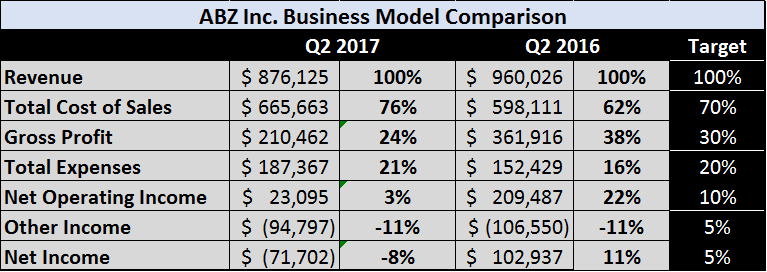More About the Importance of Strong Financial Data
Small businesses and grassroots nonprofits tend to suffer from three recurring headaches:
- Not Enough Revenue
- Staff Turnover
- Weak Financial Data
Most entrepreneurs go back and forth between the first two and never seem to get to #3. It's the feast and famine issue. You start selling like crazy, and it works! The next thing you know, you've got a capacity issue, so you turn your attention toward the team to focus on them, and you stop selling. Then the revenue gets thin, so you start selling again, but now the staff is screaming, so you turn to that issue, and so it goes in a seemingly endless cycle of frustration.
The only way to get out of this classic entrepreneurial cycle is with good financial data. Timely, accurate financials can tell you where to put your attention, when and for how long so that you can balance the sales vs. capacity issues.
The key is to begin by solving the weak financial data issue. When you finally get your financial data right, you will know how much to spend on marketing (your probably not spending enough) and you will know how much you need to spend on staff (you probably overspending for the amount of productivity you're getting).
It all starts with a business model. Since people use that term to mean different things it can be confusing. At the Giersch Group, we use the term business model to signify how the top line revenue gets down to the bottom line. The way that a dollar of Revenue turns into some % of Net Income is easily shown in a P&L format as a percentage of revenue model.
Here's a sample business model comparing same quarter year over year for the remodeling/light construction industry.
The comparison of these two business models makes it rather clear why Q2 2017 did not hit the profitability targets compared to Q2 2016, which exceeded them by more than double. In this case, it was a question of margins and Cost of Sales.
Most industries have certain common notions of what their business model should look like and it is helpful to know these benchmarks when setting your % of revenue targets. The first cut on your business model should be know your Gross Profit and Overhead percentages and how they compare to standards in your industry.
But to solve the feast and famine issue you will need to drill down on the overhead piece and break out salaries and marketing. Again, your industry should have some guidelines on how much is reasonable to be spending on these two line items. For example, in a professional services firm, you might shoot for 35% of revenue for staff and 8% of revenue for marketing. A construction company, on the other hand, will have most of its staff costs in COGS and may need to do very little marketing.
The US Small Business Administration recommends that small businesses spend anywhere from 7% to 12% on marketing and 30% to 50% on salaries. Of course, there is no hard and fast rule for any business. The only real answer is to review your financials carefully every month, and do a little industry research. You will quickly figure out what is the right amount to spend on sales and marketing for your business.
Remember, the goal is to get the money from the top line to the bottom line. If you spend too much on staff, the money won't drop to the bottom, but if you spend too little on marketing, there won't be any money at the top.
